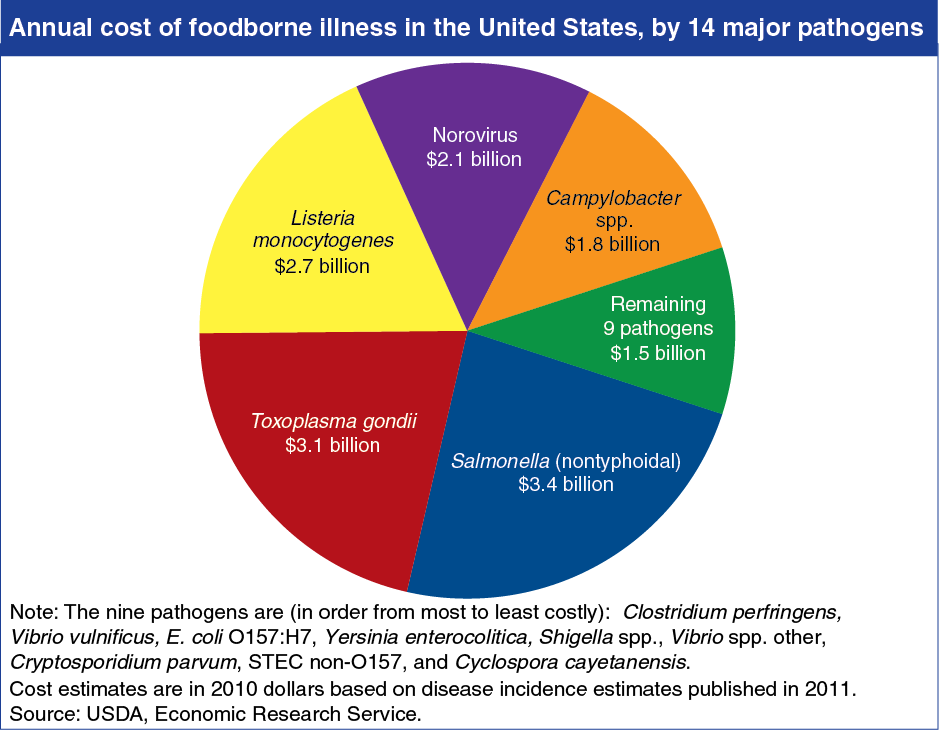Salmonella imposes the greatest cost among major U.S. foodborne pathogens
- by Economic Research Service
- 11/21/2013

Estimates of the economic cost of foodborne illness play an important role in guiding food safety policy. A recent ERS study put the cost of foodborne illness at $14.6 billion per year, which accounts for medical care, lost time from work, and losses due to premature death. The cost of a foodborne pathogen is determined by both the number and severity of illnesses it causes. Salmonella and Toxoplasma gondii rank highest in cost because they cause the highest number of deaths each year. Norovirus ranks high because it sickens more people each year than the other pathogens, even though the symptoms of norovirus illness are generally mild and rarely require hospitalization. E. coli O157:H7 accounts for a relatively small fraction (2 percent) of illness costs attributed to the 14 major pathogens, but it receives a great deal of attention from the news media and policymakers partly because it can have severe impacts on children. This chart appears in “Recent Estimates of the Cost of Foodborne Illness Are in General Agreement” in ERS’s November 2013 Amber Waves magazine.

